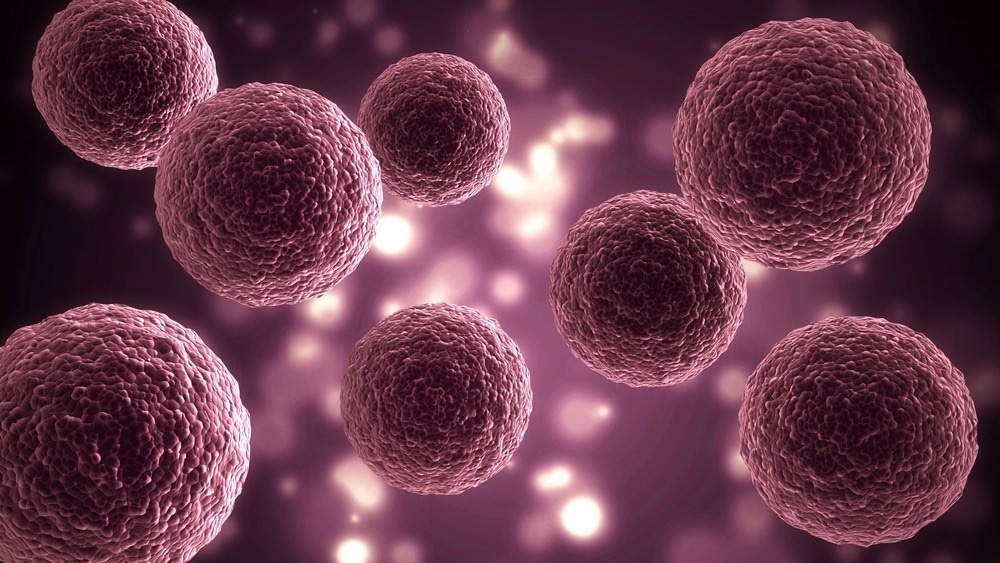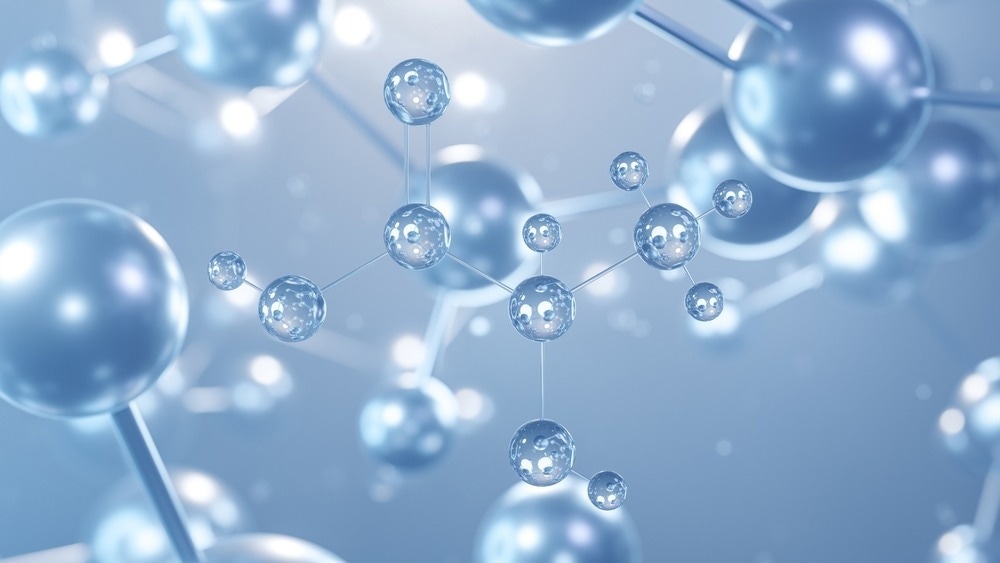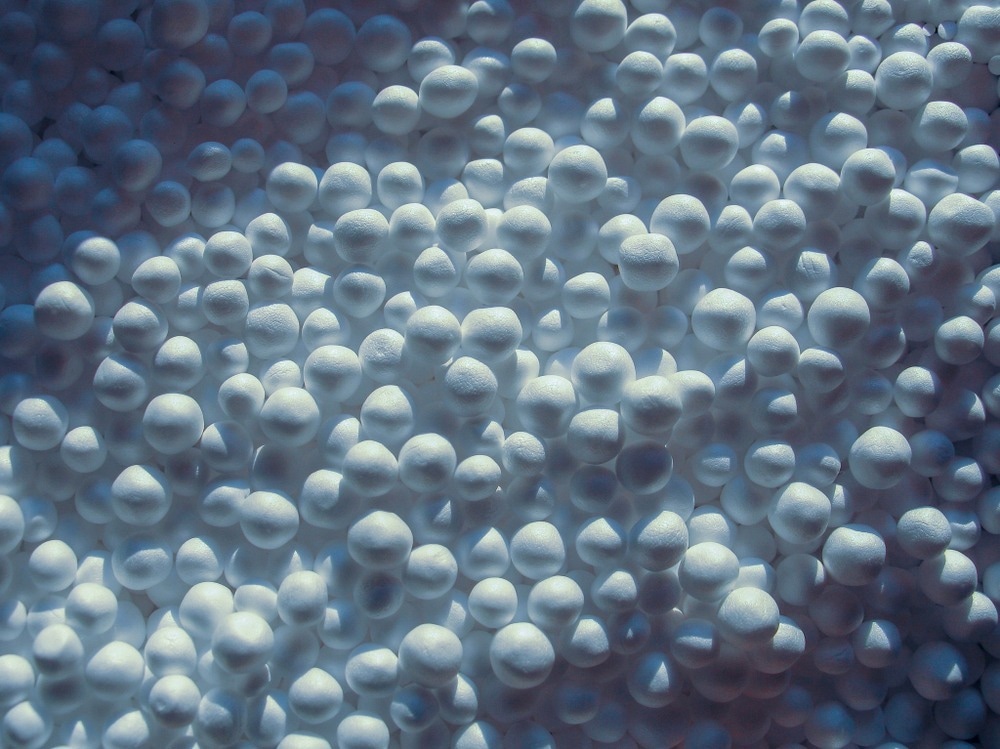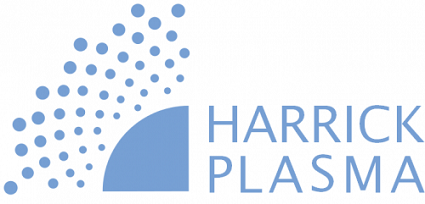Cell adhesion is critical in tissue engineering and cell culture. In their native environment, cell adhesion molecules (CAMs) bind to the extracellular matrix and nearby cells to offer structural support and chemical cues that are essential for cell viability, proliferation, and differentiation. That being said, most cell culture materials are inert and impede cell anchorage. Plasma treatment presents bioactive, hydrophilic functional groups to cell culture materials, which improves cell adhesion and viability.

Image Credit: Billion Photos/Shutterstock.com
Cell culture materials impact a target cell’s ability to proliferate and function as planned. These materials offer precise mechanical and chemical cues that decide a cell's morphology and differentiation. Typically, cells are cultured on polystyrene (Tissue Culture Plastic) that has been plasma-treated. While TCP allows for quick growth and development, flat cell morphology can have a negative impact on cell function or potentially force cells onto unintentional differentiation pathways (e.g., Neuron Morphology vs. Glial Cells).
In recent years, 3D cell culture materials have been useful in reproducing the native environment in artificial models. Polymer cell scaffolds are commonly used because they resemble the extracellular matrix, are low-cost, and have inert and non-toxic chemistry. Several polymeric scaffolds are biodegradable or have other intriguing characteristics that add to their success in these situations. However, all of these materials are hydrophobic and can harm cell adhesion.
Plasma treatment is a critical tool in developing bioactive cell culture materials with hydrophilicity and high cell adhesion. An air or oxygen plasma is commonly used for nanoscale cleaning and presenting functional groups with high biological affinity (Carboxyl, Hydroxyl, Amine).
Devoid of dangerous or lengthy wet chemistry processes, benchtop plasma cleaners produce hydrophilic surfaces suited to cell seeding or coating inside the lab. This enables researchers to manipulate the chemistry of cell scaffolds quickly and easily. This includes introducing extracellular matrix constituents, like fibronectin, which can further enhance cell function.
Polycaprolactone (PCL)
Polycaprolactone (PCL) is typically used as a cell scaffold because it resembles native ECM and has a lengthy and non-toxic biodegradation rate. PCL has an impressive clinical track record and has been approved by the FDA in several existing medical devices. Plasma treatment is commonly used to increase cell attachment or prepare PCL substrates for surface coatings, increasing cell activity. Currently, PCL scaffold research is primarily focused on bone and cartilage formation.
Cells & Tissue: Endothelial, Bone, Adipose, Epithelial, Kidney, Neurons, Prostate, Smooth Muscle, Skin, Liver, Cartilage, ACL, Heart Valve Leaflets, Tumor Models
Process Gases: Air, Oxygen, Carbon Dioxide, Argon, Nitrogen
Polylactic Acid (PLA, PLLA)
Polylactic acid (PLA) scaffolds are biocompatible and biodegradable. They are a highly suitable option for short-term surgical products like mesh implants and sutures. The literature profiling PLA's mechanical properties is prolific, allowing delicate control of polymer porosity and degradation. Plasma treatment of PLA cleanses the surface and improves cell spreading, proliferation, and differentiation. Currently, PLA is featured in neurogenesis, osteogenesis, and vascularization for cell grafting.
Cells & Tissue: Bone, Endothelial, Neurons, Skin, Adipose, Blood vessels
Process Gases: Air, Oxygen, Nitrogen, Argon, Neon

Image Credit: SergeiShimanovich/Shutterstock.com
Poly(Lactic-Co-Glycolic Acid) (PLGA)
Poly(Lactic-co-Glycolic Acid) (PLGA) is biocompatible. He has a tunable degradation and topography based on ratios of lactic acid to glycolic acid, which are available throughout polymerization.
PLGA scaffolds are typically coated with minerals like hyaluronic acid or fibrin to increase fiber strength or cell activity.
Plasma treatment is greatly effective at cleaning PLGA without altering the scaffold's morphology. Plasma is also useful in improving surface wetting and coating evenness. With an impressive safety track record and being approved by the FDA, PLGA is commonly used for research on bone formation and differentiation.
Cells & Tissue: Bone, Adipose, Tendon-Bone, Salivary glands
Process Gases: Air, Argon, Oxygen
Poly(L-Lactic Acid)-Co-Poly (ε-Caprolactone) (PLACL)
Poly(L-Lactic Acid)-Co-Poly(E-Caprolactone) is a tunable copolymer because of the different properties offered by Poly(L-Lactic Acid) (PLA) and Poly(E-Caprolactone) (PCL). This results in a well-suited candidate for drug or cell delivery.
Plasma treatment improves cell adhesion and density and also provides the chance to coat PLACL substrates with materials like collagen or hyaluronic acid. Subsequently, these scaffolds are leveraged for use in bone, vascular, and muscular formation.
Cells & Tissue: Bone, Skin, Mesenschymal Stem Cells, Endothelial Cells, and Vascular grafts
Process Gases: Air
Polystyrene (TPS, LCP, SRP, LDPE)
While polystyrene is typically used for 2D cell culture (Tissue Culture Plastic), it lacks the biocompatibility needed for medical use.
Plasma treatment greatly improves polystyrene biocompatibility and seeding efficiency. Spin-coating polystyrene enables researchers to command the substrate’s topography while also increasing permeability and surface area. Although non-biodegradable, porous PS membranes are beneficial for studying bone formation, cancer progression, and cell differentiation.
Cells & Tissue: Bone, Adipose, Epithelial, Lymphoma cancer, Mesenchymal stem cells
Process Gases: Oxygen, Air

Image Credit: mymary_art/Shutterstock.com
Polyethylene Terephthalate (PET, PETE)
Polyethylene Terephthalate (PET) is a popular material in ligament or vasculature grafts because of its stability, mechanical strength, and biocompatibility. Untreated PET is poor in terms of cell adhesion properties, but plasma treatment can improve these properties. Plasma treatment improves protein and cell adsorption and cell distribution by increasing the surface’s hydrophilicity.
Cells & Tissue: Ligament, Endothelial, Bone, Vascular
Process Gases: Air, Oxygen
Poly(Ethylene Oxide)/Poly(Butylene Terephthalate) (PEOT/PBT)
Poly(ethylene oxide)/poly(butylene terephthalate) (PEOT/PBT) is an inexpensive block copolymer with a high degree of cell attachment and tunable properties. The mechanical strength and the degradation are able to be modified, with PEOT degrading because of oxidation and PBT degrading caused by hydrolysis, resulting in unique biodegradation rates.
It has proved to be an appropriate scaffold for several different types of cells, such as chondrocytes, fibroblasts, and keratinocytes. When exposed to plasma, the substrate has increased cell attachment.
Cells & Tissue: Epithelial, Fibroblasts, Chondrocye, Kidney
Process Gases: Oxygen, Argon
Other Cell Scaffold Materials
Other cell scaffolding materials utilized in combination with Harrick Plasma Cleaners are Acrylonitrile Butadiene Styrene (ABS), Deproteinized Bovine, Hydroxyapatite, Poly(propylene fumarate) (PPF), Polycarbonate, Paper & Cellulose, Polylysine (PLL, PDL), Poly(methyl methacrylate) (PMMA), Polysulfone PSU, Polyurethane (PUA), SU-8, and Titanium Fiber Mesh.
References and Further Reading
Polycaprolactone (PCL): Articles by Harrick Plasma Users
- Abbasi N, Hamlet S, and Nguyen N. “Calcium phosphate stability on melt electrowritten PCL scaffolds”. Journal of Science: Advanced Materials and Devices 2020 5: 30-39. 10.1016/j.jsamd.2020.01.001
- Bate T. S. R, Forbes S. J, and Callanan A. “Controlling Electrospun Polymer Morphology for Tissue Engineering Demonstrated Using hepG2 Cell Line”. Journal of Visualized Experiments 2020. 10.3791/61043
- Bock N. “Bioengineered Microtissue Models of the Human Bone Metastatic Microenvironment: A Novel In Vitro Theranostics Platform for Cancer Research”. Theranostics 2019 2054: 23-57. 10.1007/978-1-4939-9769-5_2
- Burton TP, Corcoran A, and Callanan A. “The effect of electrospun polycaprolactone scaffold morphology on human kidney epithelial cells”. Biomed. Mater. 2018 13: 15006. 10.1088/1748-605X/aa8dde
- Calhoun M, Chowdhury S, Nelson M, Lannutti J, Dupaix R, and Winter J. “Effect of Electrospun Fiber Mat Thickness and Support Method on Cell Morphology”. Nanomaterials 2019 9. 10.3390/nano9040644
- Munir N, McDonald A, and Callanan A. “A combinatorial approach: Cryo-printing and electrospinning hybrid scaffolds for cartilage tissue engineering”. Bioprinting 2019 16. 10.1016/j.bprint.2019.e00056
- Pereira B, Lister N, Hashimoto K, Teng L, Flandes-Iparraquirre M, Eder A, Sanchez-Herrero A, and Niranjan B. “Tissue engineered human prostate microtissues reveal key role of mast cell-derived tryptase in potentiating cancer-associated fibroblast (CAF)-induced morphometric transition in vitro”. Biomaterials 2019 197: 72-85. 10.1016/j.biomaterials.2018.12.030
Polylactic Acid (PLA, PLLA): Articles by Harrick Plasma Users
- Chim H, Ong JL, Schantz JT, Hutmacher DW, and Agrawal CM. “Efficacy of glow discharge gas plasma treatment as a surface modification process for three-dimensional poly (D,L-lactide) scaffolds”. J. Biomed. Mater. Res. A 2003 65A: 327–335. 10.1002/jbm.a.10478
- Demina TS, Gilman AB, and Zelenetskii AN. “Application of high-energy chemistry methods to the modification of the structure and properties of polylactide (a review)”. High Energy Chem. 2017 51: 302-314. 10.1134/S0018143917040038
- Liu W, Cai Q, Zhang F, Wei Y, Zhang X, Wang Y, Deng X, and Deng X. “Dose-dependent enhancement of bone marrow stromal cells adhesion, spreading and osteogenic differentiation on atmospheric plasma-treated poly(L-lactic acid) nanofibers”. J. Bioact. Compat. Polym. 2013 28: 453–467. 10.1177/0883911513494623
- Mohiti-Asli M, Saha S, Murphy SV, Gracz H, Pourdeyhimi B, Atala A, and Loboa EG. “Ibuprofen loaded PLA nanofibrous scaffolds increase proliferation of human skin cells in vitro and promote healing of full thickness incision wounds in vivo”. J. Biomed. Mater. Res. B 2015 105: 327–339. 10.1002/jbm.b.33520
- Zuidema JM, Hyzinski-Garcia MC, Van Vlasselaer K, Zaccor NW, Plopper GE, Mongin AA, and Gilbert RJ. “Enhanced GLT-1 mediated glutamate uptake and migration of primary astrocytes directed by fibronectin-coated electrospun poly-l-lactic acid fibers”. Biomaterials 2014 35: 1439–1449. 10.1016/j.biomaterials.2013.10.079
Poly(Lactic-co-Glycolic Acid) (PLGA): Articles by Harrick Plasma Users
- Foraida ZI, Kamaldinov T, Nelson DA, Larsen M, and Castracane J. “Elastin-PLGA hybrid electrospun nanofiber scaffolds for salivary epithelial cell self-organization and polarization”. Acta Biomater. 2017 62: 116-127. 10.1016/j.actbio.2017.08.009
- James AW, Zara JN, Corselli M, Chiang M, Yuan W, Nguyen V, Askarinam A, Goyal R, Siu RK, Scott V, Lee M, Ting K, Peault B, and Soo C. “Use of Human Perivascular Stem Cells for Bone Regeneration”. J. Vis. Exp. 2012 63: e2952. 10.3791/2952
- Lipner J, Boyle JJ, Xia Y, Birman V, Genin GM, and Thomopoulos S. “Toughening of fibrous scaffolds by mobile mineral deposits”. Acta Biomater. 2017 58: 492-501. 10.1016/j.actbio.2017.05.033
- Lo DD, Hyun JS, Chung MT, Montoro DT, Zimmermann A, Grova MM, Lee M, Wan DC, and Longaker MT. “Repair of a Critical-sized Calvarial Defect Model Using Adipose-derived Stromal Cells Harvested from Lipoaspirate”. J. Vis. Exp. 2012 68: e4221. 10.3791/4221
Poly(L-Lactic Acid)-Co-Poly(E-Caprolactone) (PLACL): Articles by Harrick Plasma Users
- Chan C, Liao S, Li B, Lareu R, Larrick J, Ramakrishna S, and Raghunath M. “Early adhesive behavior of bone-marrow-derived mesenchymal stem cells on collagen electrospun fibers”. Biomed. Mater. 2009 4: 35006. 10.1088/1748-6041/4/3/035006
- Chandrasekaran A, Venugopal J, Sundarrajan S, and Ramakrishna S. “Fabrication of a nanofibrous scaffold with improved bioactivity for culture of human dermal fibroblasts for skin regeneration”. Biomed. Mater. 2011 6: 15001. 10.1088/1748-6041/6/1/015001
- Gupta D, Venugopal J, Mitra S, Dev VRG, and Ramakrishna S. “Nanostructured biocomposite substrates by electrospinning and electrospraying for the mineralization of osteoblasts”. Biomaterials 2009 30: 2085–2094. 10.1016/j.biomaterials.2008.12.079
- He W, Yong T, Ma ZW, Inai R, Teo WE, and Ramakrishna S. “Biodegradable polymer nanofiber mesh to maintain functions of endothelial cells”. Tissue Eng. 2006 12: 2457–2466. 10.1089/ten.2006.12.2457
Polystyrene (TPS, LCP, SRP, LDPE): Articles by Harrick Plasma Users
- Kumar A, Lau W, and Starly B. “Human Mesenchymal Stem Cells Expansion on Three-Dimensional (3D) Printed Poly-Styrene (PS) Scaffolds in a Perfusion Bioreactor”. Procedia CIRP 2017 65: 115-120. 10.1016/j.procir.2017.04.012
- Naeem F, Prestayko R, Saem S, Nowicki L, Imit M, Adronov A, and Moran-Mirabal JM. “Fabrication of conductive polymer nanofibers through SWNT supramolecular functionalization and aqueous solution processing”. Nanotechnology 2015 26: 395301. 10.1088/0957-4484/26/39/395301
- Lee K, Koon Y, Kim J, Chiam K, and Park S. “Astral microtubules determine the final division axis of cells confined on anisotropic surface topography”. Journal of Experimental Nanoscience 2020 70-86. 10.1080/17458080.2020.1729355
- Wongkaew N, Simsek M, Heider J, Wegener J, Baeumnet A, Schreml S, and Stolwijk J. “Cytocompatibility of Mats Prepared from Different Electrospun Polymer Nanofibers”. ACS Applied Bio Materials 2020 3: 4912-4921. 10.1021/acsabm.0c00426
Polyethylene Terephthalate (PET, PETE): Articles by Harrick Plasma Users
- Moczulska M, Bitar M, Swieszkowski W, and Bruinink A. “Biological characterization of woven fabric using two- and three-dimensional cell cultures”. J. Biomed. Mater. Res. A 2012 100A: 882–893. 10.1002/jbm.a.34023
- Thurner P, Muller B, Beckmann F, Weitkamp T, Rau C, Muller R, Hubbell J, and Sennhauser U. “Tomography studies of human foreskin fibroblasts on polymer yarns”. Nucl. Instrum. Methods Phys. Res., Sect. B 2003 200: 397–405. 10.1016/s0168-583x(02)01729-9
Poly(ethylene oxide)/poly(butylene terephthalate) (PEOT/PBT): Articles by Harrick Plasma Users
- Bettahalli N, Vicente J, Moroni L, Higuera G, van Blitterswijk C, Wessling M, and Stamatialis D. “Integration of hollow fiber membranes improves nutrient supply in three-dimensional tissue constructs”. Acta Biomater. 2011 7: 3312-3324. 10.1016/j.actbio.2011.06.012
- Moroni L, Curti M, Welti M, Korom S, Weder W, De Wijn JR, and Van Blitterswijk CA. “Anatomical 3D fiber-deposited scaffolds for tissue engineering: Designing a neotrachea”. Tissue Eng. 2007 13: 2483–2493. 10.1089/ten.2006.0385
- Damanik F, Brunelli M, Pastorino L, Ruggiero C, van Blitterswijk C, Rotmans J, and Moroni L. “Sustained delivery of growth factors with high loading efficiency in a layer by layer assembly”. Biomaterials Science 2020 8: 174-188. 10.1039/C9BM00979E
Other Cell Scaffolding Materials: Articles by Harrick Plasma Users
- Mozdzen LC, Rodgers R, Banks JM, Bailey RC, and Harley BAC. “Increasing the strength and bioactivity of collagen scaffolds using customizable arrays of 3D-printed polymer fibers”. Acta Biomater. 2016 33: 25-33. 10.1016/j.actbio.2016.02.004
- Li Q, Zhou G, Yu X, Wang T, Xi Y, and Tang Z. “Porous deproteinized bovine bone scaffold with three-dimensional localized drug delivery system using chitosan microspheres”. Biomed. Eng. Online 2015 14: 1. 10.1186/s12938-015-0028-2
- Burgio F, Rimmer N, Pieles U, Buschmann J, and Beaufils-Hugot M. “Characterization and in ovo vascularisation of a 3D-printed hydroxyapatite scaffold with different extracellular matrix coatings under perfusion culture”. Biology Open 2018. 10.1242/bio.034488
- Dermutz H, Thompson-Steckel G, Forro C, de Lange V, Dorwling-Carter L, Voros J, and Demko L. “Paper-based patterned 3D neural cultures as a tool to study network activity on multielectrode arrays”. RSC Adv. 2017 7: 39359-39371. 10.1039/C7RA00971B
- Neiman JAS, Raman R, Chan V, Rhoads MG, Raredon MSB, Velazquez JJ, Dyer RL, Bashir R, Hammond PT, and Griffith LG. “Photopatterning of hydrogel scaffolds coupled to filter materials using stereolithography for perfused 3D culture of hepatocytes”. Biotechnol. Bioeng. 2015 112: 777–787. 10.1002/bit.25494
- Johnson CD, D’Amato AR, Puhl DL, Wich DM, Vesperman A, and Gilbert RJ. “Electrospun fiber surface nanotopography influences astrocyte-mediated neurite outgrowth”. Biomed. Mater. 2018 13: 54101. 10.1088/1748-605X/aac4de
- Steiner G, Zimmerer C, and Salzer R. “Characterization of metal-supported poly(methyl methacrylate) microstructures by FTIR imaging spectroscopy”. Langmuir 2006 22: 4125–4130. 10.1021/la053221x
- Dean D, Wallace J, Siblani A, Wang M, Kim K, Mikos A, and Fisher J. “Continuous digital light processing (cDLP): highly accurate additive manufacturing of tissue engineered bone scaffolds”. Virtual and Physical Prototyping 2012 7: 13-24. 10.1080/17452759.2012.673152
- Ma ZW, Kotaki M, and Ramarkrishna S. “Surface modified nonwoven polysulphone (PSU) fiber mesh by electrospinning: A novel affinity membrane”. J. Membr. Sci. 2006 272: 179–187. 10.1016/j.memsci.2005.07.038
- Adolph EJ, Pollins AC, Cardwell NL, Davidson JM, Guelcher SA, and Nanney LB. “Biodegradable lysine-derived polyurethane scaffolds promote healing in a porcine full-thickness excisional wound model”. J. Biomater. Sci., Polym. Ed. 2014 25: 1973-1985. 10.1080/09205063.2014.965997
- Ouyang X, Zhang K, Wu J, Wong DS-H, Feng Q, Bian L, and Zhang AP. “Optical μ-Printing of Cellular-Scale Microscaffold Arrays for 3D Cell Culture”. Sci. Rep. 2017 7: 8880. 10.1038/s41598-017-08598-3
- Vehof JWM, Haus MTU, de Ruijter AE, Spauwen PHM, and Jansen JA. “Bone formation in Transforming Growth Factor beta-I-loaded titanium fiber mesh implants”. Clin. Oral Implants Res. 2002 13: 94–102. 10.1034/j.1600-0501.2002.130112.x

This information has been sourced, reviewed and adapted from materials provided by Harrick Plasma.
For more information on this source, please visit Harrick Plasma.